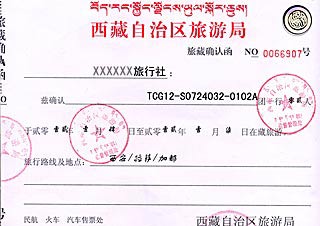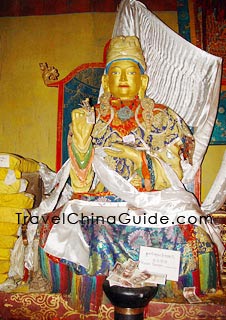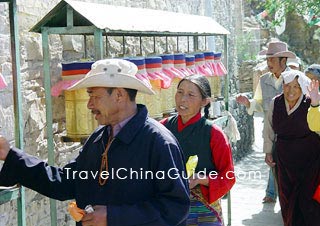Tibet Travel Tips
This chapter provides full information for the visitors including the planning of Tibet trips, practical information and some travel tips. Through them, hope you can have a good preparation.
Travel Documents
 |
| Tibet Entry Permit (click to enlarge) |
Further Reading:
Who has to carry a Tibet Travel Permit?
1. The Taiwan visitors, who do not have the valid identity card of China
2. Non-Chinese passport holders
3. The overseas Chinese, who do not have Chinese passport
Note: The Hong Kong and Macau citizens who hold SAR passport, Home-Visiting Certificate or Permit to Traveling to and from Hong Kong and Macau do not need a Tibet Travel Permit.
Since the government encourages group tours to Tibet, the permit is issued only to tour groups traveling with a Chinese tour operator. The permit is issued for free by Tibet Tourism Bureau. Your travel agency will represent you to facilitate the application process.
For those overseas visitors want to go to the region as an individual, the administrative offices of Tibet Tourism Bureau in Beijing, Shanghai, Chengdu (in Sichuan) and Golmud (in Qinghai) will answer for the related affairs.
Tel: 0086-891-6835472/ 6834315
E-mail: webmaster@xzta.gov.cn
Address: No.3 Norbulingka Road, Lhasa
1. Chengdu Office
Tel: 028-8555171
Address: No.3 Wuhou Hengjie, Chengdu
2. Xi'an Office
Address: Qomolangma Hotel, No.333 Youyi Dong Lu, Xi'an
3. Shanghai Office
Tel: 021-62578447; 021-62572413
Address: 1/F, No.350 Wuning Lu, Putuo District, Shanghai
4. Golmud Office Tel: 0979-8483286; 0979-8483532
Address: No.11 Yanqiao Zhong Lu, Golmud
5. Zhongdian Office
Tel: 0887-8229028; 0887-8227892
Address: Room 2206, Xiangbala Hotel, Shangri-La, Yunnan
Related Link: Faqs on Tibet Travel Permit
Etiquette & Taboo
Proper Etiquette
 |
| Presenting a Hada to a Statue |
1. Always walk clockwise around the religious shrines, temples, stupas, Mani stones and prayer wheels. However, if you visit a Bon monastery, then walk counterclockwise!
2. Although the monks remove their shoes upon entering a chamber, it is acceptable to enter a chamber without removing your shoes.
3. Coming inside during the chanting session is permissible. Sit or stand in the rear, with no loud and irreverent conversation!
4. Also, it is considered proper etiquette to offer some money or butter fuel while visiting a monastery.
Taboo
 |
| Walk Clockwise around the Prayer Wheels |
You May Like
- Last updated on Jun. 19, 2024 by Brenda Lian -